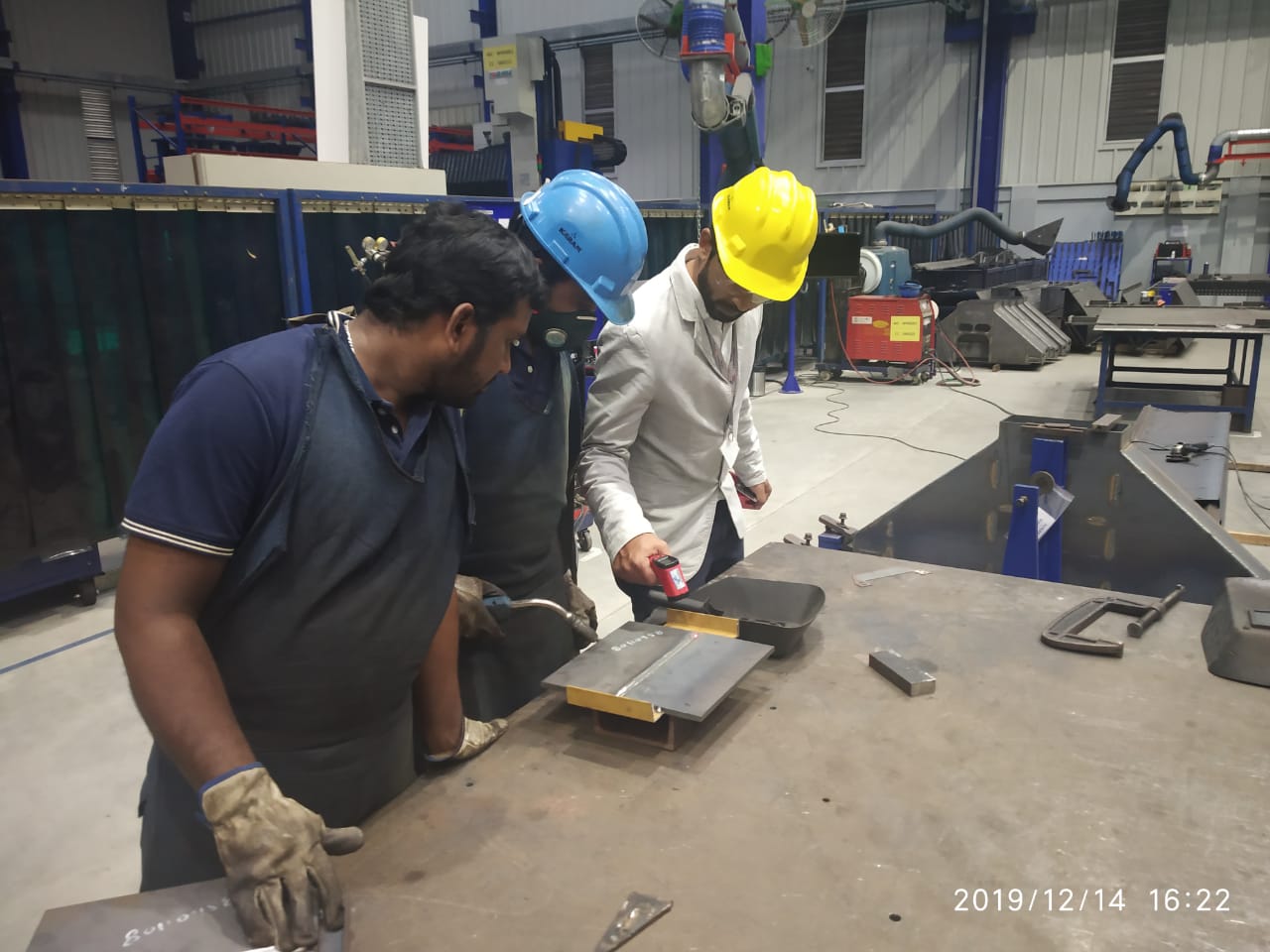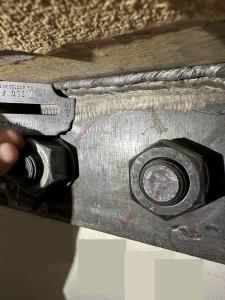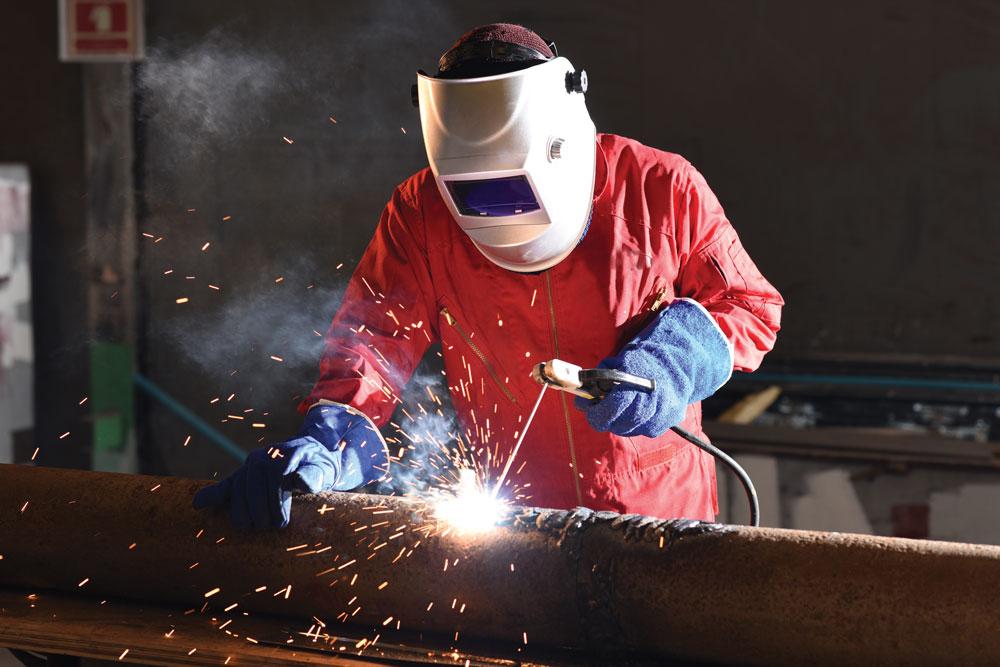Innovative Approaches to Fillet Weld Assessment and Screening: Enhancing Weld Quality and Compliance Specifications
In the realm of welding, the quality and stability of fillet welds play a crucial duty in making sure the architectural soundness and reliability of numerous industrial elements. With the constant drive for enhanced performance and conformity with rigid criteria, the expedition of ingenious methods to fillet weld inspection and testing has ended up being vital.
Advanced Non-Destructive Testing Methods
Using advanced innovations, advanced non-destructive screening methods play a crucial role in making sure the honesty and quality of fillet welds. These approaches, such as phased array ultrasonic screening (PAUT) and magnetic fragment screening (MPT), deal comprehensive insights right into the weld's internal structure without triggering any kind of damage to the product. PAUT, for instance, uses numerous ultrasonic aspects to inspect the weld from different angles, supplying a detailed visualization of prospective problems like absence of fusion or splits.
Likewise, MPT is efficient in discovering surface-breaking problems by using an electromagnetic field and iron particles to the weld location. This technique is especially useful for determining stoppages that might endanger the weld's toughness. By using these sophisticated non-destructive screening techniques, weld assessors can properly analyze the quality of fillet welds, ensuring compliance with sector criteria and regulations. The ability to find flaws at an early stage not just improves weld quality yet likewise stops costly rework or failures in architectural stability, underlining the relevance of these cutting-edge testing approaches in welding assessments.
Robotics and Automation in Evaluation
The combination of robotics and automation has actually reinvented the evaluation procedure for fillet welds, boosting performance and precision in quality analysis. Robotics supply precise control and repeatability in inspecting welds, making certain dependable and regular results. Automated systems can be set to follow certain assessment courses, guaranteeing complete protection of welds and decreasing the danger of human error.
Robotic evaluation systems geared up with advanced sensors can identify and gauge weld features with high precision, supplying comprehensive information for analysis. These systems can determine defects such as fractures, absence of combination, and porosity, enabling punctual restorative activities to be taken. Additionally, robotics and automation permit real-time information collection and analysis, offering immediate comments to drivers and assisting in quick decision-making processes.
Additionally, using robotics and automation in fillet weld assessment improves total productivity by reducing examination times and boosting inspection throughput. By streamlining the examination process, makers can guarantee weld quality and conformity requirements are met successfully, inevitably causing cost savings and enhanced item quality.
Utilizing Expert System for Evaluation
Artificial intelligence plays a critical function in improving the efficiency and precision of analysis in fillet weld evaluation processes. By taking advantage of the power of AI, inspectors can enhance the evaluation of weld high quality and conformity standards, bring about a lot more reliable and precise outcomes. AI algorithms can rapidly refine substantial quantities of information from weld evaluations, detecting problems or variances that might be challenging to recognize with the nude eye. This advanced technology enables real-time tracking of weld quality, permitting for instant rehabilitative actions to be taken if any problems are identified.
Additionally, AI systems can pick up from previous assessment data, continually enhancing their ability to recognize potential defects and inconsistencies in fillet welds. This flexible knowing capacity boosts the overall quality assurance process, minimizing the probability of human mistake and ensuring that welds fulfill the called for requirements. By incorporating man-made intelligence right into fillet weld evaluation, industries can attain higher levels of efficiency, uniformity, and compliance in their assessment techniques.
Portable Tools for On-Site Examination
 Enhancing area evaluation performance, the fostering of mobile devices reinvents on-site analysis processes for fillet welds. These tools provide flexibility and convenience, allowing inspectors to conduct extensive examinations in various areas, including remote or tough atmospheres. Mobile devices such as ultrasonic screening tools, magnetic bit assessment tools, and digital radiography systems supply real-time information and high-resolution imaging capabilities, making it possible for quick decision-making and instant responses on weld quality.
Enhancing area evaluation performance, the fostering of mobile devices reinvents on-site analysis processes for fillet welds. These tools provide flexibility and convenience, allowing inspectors to conduct extensive examinations in various areas, including remote or tough atmospheres. Mobile devices such as ultrasonic screening tools, magnetic bit assessment tools, and digital radiography systems supply real-time information and high-resolution imaging capabilities, making it possible for quick decision-making and instant responses on weld quality.One significant advantage of portable tools is their ability to streamline examination treatments, reducing downtime and improving overall efficiency. Examiners can quickly move these tools to different job sites, getting rid of the requirement for transporting hefty machinery or elements to off-site centers. Additionally, the mobility of these devices advertises cost-effectiveness by lessening transportation costs and increasing assessment timelines.
Furthermore, the use of portable tools for on-site evaluation advertises proactive quality assurance steps, as examiners can promptly recognize and address any kind of prospective welding defects or discrepancies. By integrating these ingenious technologies right into on-site examination practices, welding experts can make sure compliance with industry requirements and boost weld high quality, eventually leading to boosted architectural try this out integrity and safety and security in various welding applications.
Integration of Information Administration Systems
Having enhanced on-site evaluation procedures through the usage of mobile tools, the following stage entails the smooth combination of information monitoring systems to additionally enhance efficiency and information evaluation abilities in fillet weld assessment and screening. Welding Inspection Racine. By integrating information administration systems into the evaluation procedure, companies can improve information collection, storage, and evaluation. This assimilation enables real-time surveillance of weld high quality, instant identification of problems, and punctual decision-making to fix any kind of issues that may occur throughout the evaluation his response process
Data monitoring systems play a critical duty in centralizing evaluation data, helping with simple access for authorized employees, and making sure information integrity and safety and security. Via the assimilation of these systems, inspectors can generate comprehensive reports, track historical information for trend analysis, and improve total process performance. Furthermore, the assimilation of data monitoring systems enables smooth communication in between different stakeholders associated with the examination process, cultivating partnership and enhancing overall top quality control measures. Inevitably, the integration of information monitoring systems offers to raise the requirements of fillet weld evaluation and screening, guaranteeing conformity with industry laws and boosting weld quality.
Final Thought
In verdict, innovative approaches to fillet weld examination and testing have actually substantially improved weld quality and conformity requirements. Advanced non-destructive testing techniques, robotics, automation, expert system, portable devices, and information administration systems have revolutionized the way weld inspections are conducted. By utilizing these innovations, markets can make certain that welds fulfill the needed top quality criteria and guidelines, eventually boosting total efficiency and safety in welding procedures.

By employing these innovative non-destructive screening strategies, weld inspectors can precisely evaluate the top quality of fillet welds, guaranteeing compliance with sector requirements and guidelines. Portable devices such as ultrasonic screening gadgets, magnetic bit evaluation devices, and digital radiography systems give real-time data and high-resolution imaging capabilities, making it possible for fast decision-making and instant feedback on weld quality.
Having actually maximized on-site assessment processes with the use of mobile tools, the following stage involves the smooth combination of data administration systems to further enhance performance and data analysis abilities in fillet weld assessment and testing (Welding Inspection Racine). Eventually, the integration of information administration systems offers to raise view it now the criteria of fillet weld examination and screening, ensuring conformity with industry laws and improving weld high quality
 In final thought, cutting-edge techniques to fillet weld inspection and screening have significantly enhanced weld high quality and compliance requirements.
In final thought, cutting-edge techniques to fillet weld inspection and screening have significantly enhanced weld high quality and compliance requirements.